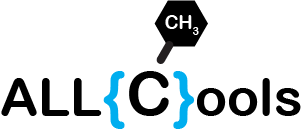ALLCools.clustering.art_of_tsne
Contents
ALLCools.clustering.art_of_tsne¶
The function art_of_tsne is from cytograph2 package https://github.com/linnarsson-lab/cytograph2/blob/master/cytograph/embedding/art_of_tsne.py
The idea behind that is based on [Kobak and Berens, 2019] with T-SNE algorithm implemented in [openTSNE](https://opentsne.readthedocs.io/en/latest/) [Poličar et al., 2019].
Module Contents¶
- art_of_tsne(X: numpy.ndarray, metric: Union[str, Callable] = 'euclidean', exaggeration: float = - 1, perplexity: int = 30, n_jobs: int = - 1) openTSNE.TSNEEmbedding[source]¶
Implementation of Dmitry Kobak and Philipp Berens “The art of using t-SNE for single-cell transcriptomics” based on openTSNE. See https://doi.org/10.1038/s41467-019-13056-x | www.nature.com/naturecommunications
- Parameters
X – The data matrix of shape (n_cells, n_genes) i.e. (n_samples, n_features)
metric – Any metric allowed by PyNNDescent (default: ‘euclidean’)
exaggeration – The exaggeration to use for the embedding
perplexity – The perplexity to use for the embedding
n_jobs – Number of CPUs to use
- Returns
- Return type
The embedding as an opentsne.TSNEEmbedding object (which can be cast to an np.ndarray)
- tsne(adata, obsm='X_pca', metric: Union[str, Callable] = 'euclidean', exaggeration: float = - 1, perplexity: int = 30, n_jobs: int = - 1)[source]¶
Calculating T-SNE embedding with the openTSNE package [Poličar et al., 2019] and parameter optimization strategy described in [Kobak and Berens, 2019].
- Parameters
adata – adata object with principle components or equivalent matrix stored in .obsm
obsm – name of the matrix in .obsm that can be used as T-SNE input
metric – Any metric allowed by PyNNDescent (default: ‘euclidean’)
exaggeration – The exaggeration to use for the embedding
perplexity – The perplexity to use for the embedding
n_jobs – Number of CPUs to use
- Returns
- Return type
T-SNE embedding will be stored at adata.obsm[“X_tsne”]
